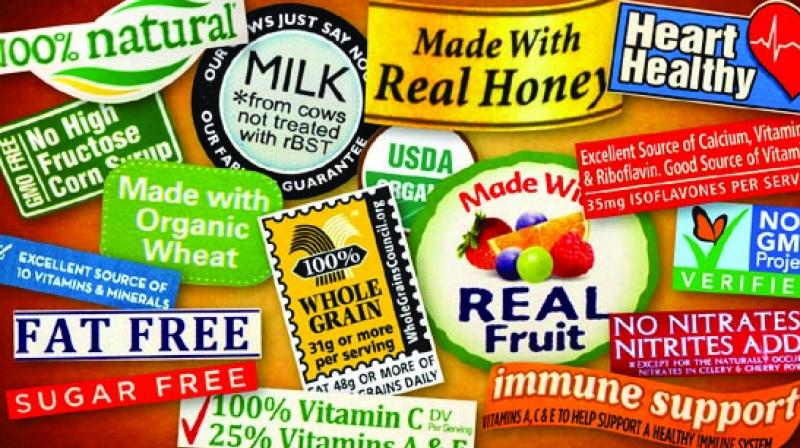Currently Empty: ₹0.00
Front of Pack Labelling: What the world is using
Non-communicable diseases (NCDs) like diabetes, hypertension, heart disease and obesity are huge health concerns across the world. Major dietary factor behind them is the consumption of junk foods, broadly classified as off that are high in fat, salt and sugar. WHO recommends the Member States to implement Front-of-Pack (FoP) nutrition labels to guide consumers towards healthier food choices, to prevent diet-related non-communicable diseases. Consumers often do not have the time to read nutrition labels while shopping, and many of them finds it difficult to understand the information provided. FoP labels can help consumers to easily identify what they are eating. FoP Labelling provides nutritional information in interpretative form on front of processed food packages.
What is FoP labelling?
Front of Pack (FoP) Labelling refers to nutrition labelling system that can help the consumers to identify the foods that are less healthy. These are presented on front of the processed food packages. FoP labelling is an important element of WHO’s global policy for encouraging governments to develop mandatory FoP labelling systems to reduce consumption of processed foods and beverages that are associated with unhealthy diets.

The Codex Committee on Food Labelling (CCFL), an international food standards body established jointly by WHO and the Food and Agriculture organization (FAO), mentions that “FoP labelling is designed to assist in interpreting nutrient declarations”. FoP labelling system is one of the best practices to nudge people from eating junk foods.
FoP labelling in India
FoP labelling on packaged foods in India, was recommended in 2014 by an expert committee constituted by the Food Safety and Standards Authority of India (FSSAI). However, even after multiple expert panel recommendations and draft regulations, India still does not have a clear labelling or Front-of-pack (FoP) Labelling System. The most recent publication from the consumer study done by IIM, Ahmedabad may help remove the impasse between the government and the industry. FSSAI also organized a stakeholder meeting with the industry and industry associations to share the findings and invite inputs from them. As we move towards a consensus, here is a brief about the various FoP labelling systems around the world.
Labelling Systems around the world
A wide range of labelling system has been implemented in various parts of the world. Among them, some are voluntary and few are mandatory. Some systems are informative and include information about the amount of key nutrients in the product, whereas others are interpretative, based on symbols, colours, words, and statements or are a mixture of informative and interpretative approaches. Some of the FOPL systems are
| Labelling Model | Country | Logo | Brief |
| HSR (Health Star rating Model | Australia & Newzealand |  Source :www.healthstarrating.gov.au | HSR model is a voluntary FOPL system. In this model food products are given a rating from 1-5 star scale based on four aspects of food associated with increasing risk factors for chronic disease – energy, saturated fat, sodium, and total sugar – as well as positive aspects, namely protein, dietary fiber, fruit, vegetables, nuts and legumes and, for some products, calcium. |
| Multiple Traffic Light Labelling (MTL) model | UK |  Source:Food Safety Agency, UK | The traffic light labelling system follows a colour coded system which tells us a food has high, medium or low amounts of fat, saturated fat, sugars and salt. It will also tell you the number of calories and kilojoules in that particular product. Green color indicates that the food is healthy and amber indicates medium that the food can be taken most of the time and if red in colour try to cut down, can be eaten less often. |
| Nutriscore model | France (Recently approved in: Belgium, Spain ,Germany, Netherlands & Luxemburg) |  Source: ec.europa.eu | It is a voluntary labelling system presented as 5-colo,is a system of nutrition labelling based on a logo with five values ranging from A to E and from green to red, established according to the nutritional value of a food product |
| Nordic Key hole Model | Sweden ,Norway and Denmark |  Source: PAHO | One of the oldest labelling system, It identifies nutrients like total fat, saturated fat and trans fat, Salt, Added sugar, dietary fibre & whole grains are displayed on the basis of overall assessment of healthiness. It applies to both pre-packaged and unpackaged foods like fruits, vegetables, bread, cheese, meat and seafood. It cannot be used for snacks, potentially eliminating such foods from a healthy diet. |
| Warning Model | Chile (Countries – including Uruguay, Peru and Israel – have introduced warning labels of their own.) |  Source:Ministerio de Salud, Chile | It is a mandatory warning label on pre-packaged foods that contain energy or negative nutrients exceeding certain threshold levels. |
| Reference intake system | European Union |  Source: Reference Intakes, Food Drink Europe | RI system is a mandatory in EU It presents Energy only, or energy plus fat, saturates, sugars and salt. Information can be given for energy and 4 nutrients either per 100g/100ml or per portion. Energy information must be provided per 100g/ml. RI system show you only the amounts of negative nutrients that a product contains such as fat, sugars, salt and do not include positive nutrients such as fibre. |
Which among the existing labelling systems is the best?
Various studies were conducted to compare these models. Among those, one study was done by The Ministry of Health and Wellness of Jamaica, the University of Technology, Jamaica, and the Pan American Health Organization. This study conducted a randomized controlled trial to examine the best performing front-of package labelling (FOPL) in Jamaica. In that study they compared the octagonal warning (WRN) model with the Traffic light system(TFL),Magnifying Glass(MGG) and the nutrition fact upfront as a control(CTR). Mock up product were presented to participants and consumers shown the octagonal warning label the best.

Another study was conducted in the year 2019 in Netherlands on Consumer’s response to FoP labelling comparison of five existing models (HSR, MTL, RI, Nutri-score & warning label) was done in terms of consumer’s understanding of labels and their perception. Participants were interviewed based on their perception and results showed all FoP labelling system were favourably perceived only marginal difference were noted. While no significant difference across labels was observed for food choices, the Nutri-Score demonstrated the highest overall performance in helping consumers rank the products according to their nutritional quality.
While the health star rating system has come out as the most popular model, it is complex to implement and even harder to verify. As pointed out by Mr. Amit Khurana, CSE health star ratings are taken with a positive connotation and do not meet the intention of FOPL regarding warning for negative nutrients, which may be overwhelmed by positive nutrients in the algorithm design for HSR. There is also a plan to exempt dairy products from the declaration of FOPL which rules out a lot of fat that is used in the Indian household. The health star rating might also not adequately highlight the risks for consumers affected by illnesses like diabetes and hypertension.
The IIM study also indicates that HSR performs best in the older aged population compared to the younger ones. HSR also seems to have a better acceptance among the urban consumers than the rural consumers. Considering that the sample size favored the urban population ( As per Table 2, 52% of the respondents were urban), there is definitely not a fair representation when we consider that the Indian population is only 35% urban and 65% Rural (Source: https://www.worldometers.info/demographics/india-demographics). This co-relation also seems to reflect on the finding that salaried people have higher preference for HSR and they are likely living in urban areas.
It remains to be seen how the FOP labelling is likely to go this time. But whichever labelling system we may apply there has to be a lot of consumer awareness that needs to be created.

Author: Ramesh is a technologist, with a passion for using technology to solve operational problems. He believes in designing for usability and is happy to work with anyone who can help him solve these problems. He is also the current CEO at Food Safety Works.







